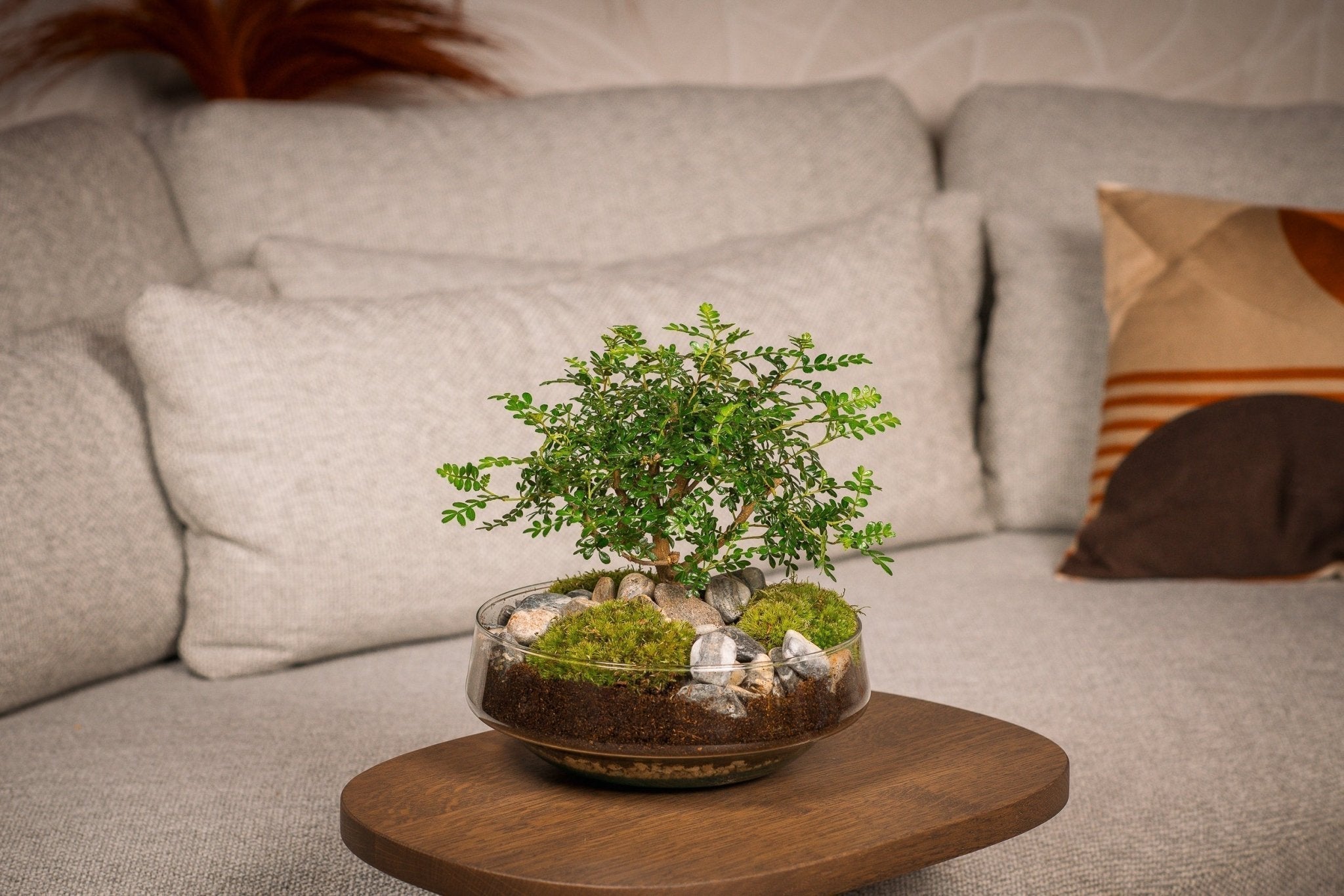Buying a bonsai tree? : How to care for a bonsai tree and everything you need to know
Have you always wanted to buy a bonsai plant, but don't know how to care for it? Or do you already have a bonsai plant but want to make it even more beautiful? Then you've come to the right place. In this blog post, I'll tell you everything you need to know about caring for a bonsai tree. With my tips as a botanist from The Green Bottle Garden, an online store specializing in bonsai, you can make your bonsai plant shine like never before.
What is a Bonsai plant?
A bonsai is a miniature treethat is shaped and pruned in a small pot to maintain a specific shape. The word bonsai literally means "tree in a pot" in Japanese. Growing and caring for a bonsai is an art form that has been practiced in Asia for centuries. The goal is to recreate the beauty and harmony of nature in a small format.
How to choose a Bonsai plant?
If you're looking to buy a bonsai tree, there are many different types to choose from. Most bonsai trees are suitable for outdoor use, while others are suitable for indoor use. Some bonsai trees are easy to care for, while others can be more complex or require more experience and skill. Some are evergreen, while others lose their leaves in winter. Some are inexpensive, while others are expensive. You want to buy a bonsai tree, but how do you choose the right bonsai plant for you?
The answer depends on your personal preference, your budget, your climate, and the space available. But if you're a beginner, we recommend starting with a bonsai plant that's easy to care for, suited to your climate, and affordable. Some examples of similar bonsai plantsare the Carmona and the Zelkova . You can recognize these species by their male, waxy leaves and are suitable as indoor bonsai trees. Easy outdoor bonsai trees are the Juniperus bonsai tree and the Pinus bonsai.

Bonsai care indoors and outdoors
Caring for a bonsai plant doesn't seem difficult at first glance, but it does require some knowledge and practice. There are five key aspects to bonsai care: placement, watering, and pruning. Let's go through them one by one.
bonsai tree placement
The placement of your bonsai plant is very important for its well-being. You should consider two important factors: the difference between indoor and outdoor bonsai care, and the amount of sunlight. Indoor bonsai trees require daylight, so the bonsai plant needs a bright spot indoors. The same applies to outdoor bonsai trees. Too much direct sunlight can be harmful to both types of bonsai.
bonsai trees for indoors or outdoors?
Bonsai plants generally thrive outdoors, where they experience abundant natural light and temperature, essential for their growth. In cold regions like the Netherlands, you should bring bonsai indoors in winter to protect them from frost. In warmer areas, move them to a shady spot in summer to prevent overheating.
Varieties like the Carmona or Zelkova thrive indoors. Place them in a bright environment year-round, such as a south-facing windowsill, but away from heating or air conditioning units to avoid the dry air.
Sunlight
Sunlight is essential for your bonsai plant's photosynthesis, the process by which it produces its own food. Without sufficient sunlight, your bonsai will become weak and pale, and eventually die. Therefore, your bonsai should be placed in a bright spot where it receives at least four to six hours of indirect sunlight per day.
Watering
Watering a bonsai is the most important part of its care. Both too much and too little water can be harmful: too much water causes root rot, mold, and a lack of oxygen at the roots, while too little water leads to dehydration, wilting, and leaf drop.
The soil should therefore always remain slightly moist —never soaking wet and never completely dry. Simply check this by inserting your finger a few centimeters into the soil. If the soil is dry, water immediately. If the soil is slightly moist, water it a little to prevent it from drying out. If the soil is moist, wait a little longer. If the soil feels very wet, it has been overwatered, and the excess water should be able to drain freely.
By checking regularly and adjusting the watering accordingly, you give your bonsai exactly the right amount of water and it will remain healthy and strong.

bonsai pruning
Your bonsai plant needs pruning to define and maintain its shape and style. There are two types of pruning: maintenance pruning and shaping pruning. Always use sharp, clean tools when pruning your bonsai plant.
Maintenance pruning:Perform this during the growing season to maintain the bonsai's shape. Prune new shoots back to one or two leaves, especially at the top and outer edges, to encourage inward and forward growth. Also remove dead or disparate branches.
Pruning:Do this in winter, when the bonsai is rusting. Remove thick branches that compromise aesthetics, such as those that obscure the trunk, cross each other, or grow unnaturally. Cut close to the trunk and treat pruning wounds with wound paste to promote healing.
To prune your Bonsai plant you need sharp and clean tools, such as pruning shears, loppers and knot pliers.
Conclusion, Bonsai Tree Care Indoor or Outdoor
A bonsai plantis a wonderful addition to your home or garden. With proper care, you can make your bonsai flourish and enjoy its beauty.
Thanks for reading and have fun with your Bonsai tree!

Share:
Optimal care for Phalaenopsis: Practical tips
Why does my plant have yellow leaves and how do you fix yellow leaves on your plant?